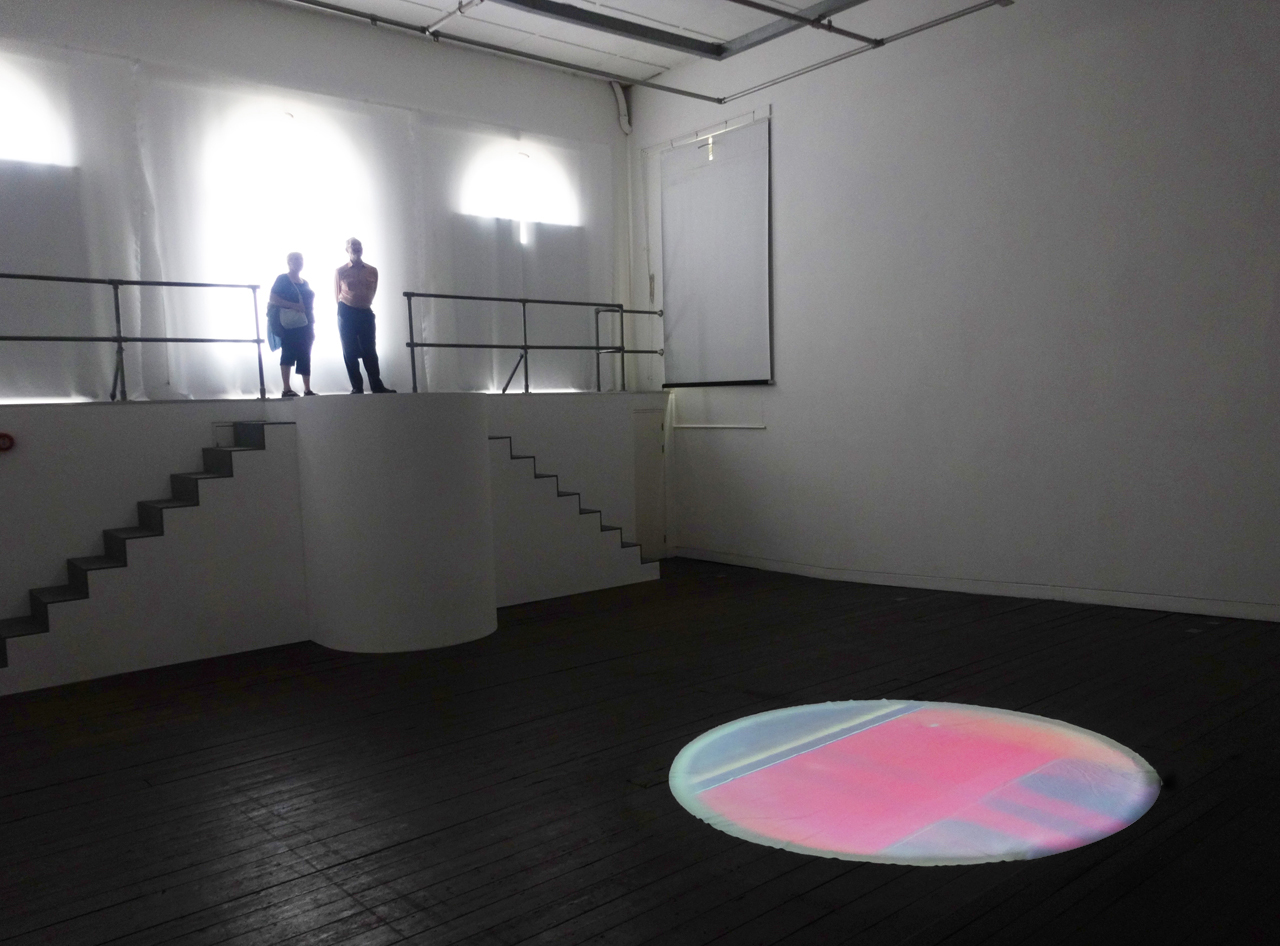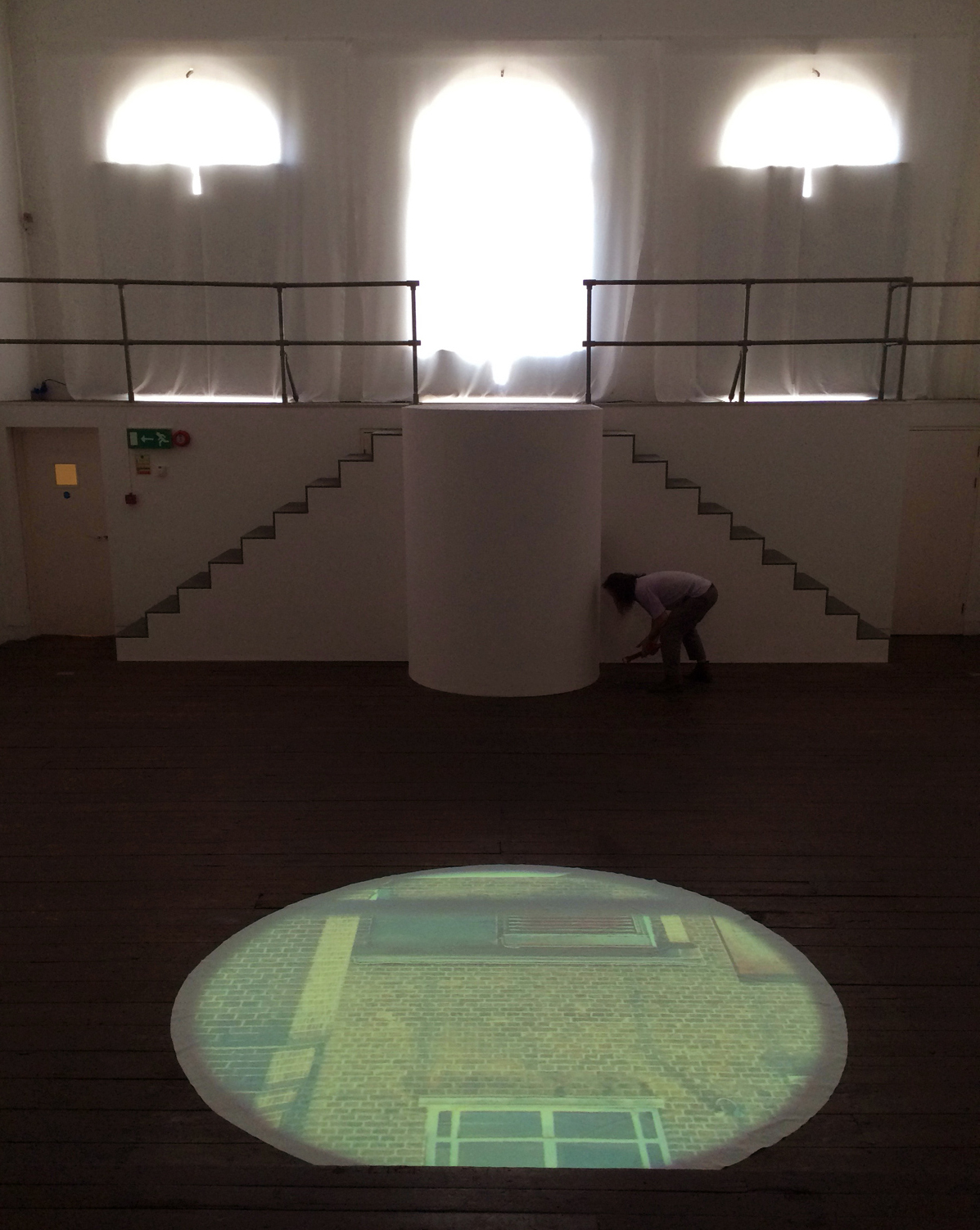Notes on Windauge 2016, Jane Mulfinger
If we observe closely, overlooked and undervalued aspects become exquisite.
The relationship with the rail line is what we find really interesting. At times we anthropomorphize the building wing, thinking about the round window, or oculus, as an eye, (in German, “Auge”), that has been watching the railway line for well over a hundred years, the same railway line that clipped its footprint, shearing off the remainder of the building. In a sense this piece is an attempt to see what the remaining third, what she, has been looking at, by amplifying the surroundings through sight and sound. Under normal circumstances the audience cannot see anything but sky through the oculus. Our task became an adjustment, a poetic negotiation, to tease out the circumstances of time, the opposition of inside and out, and the elements of light and sound.
The parts of history:
• The Lambeth Ragged School was built in 1851 as one of the Ragged Schools for the poor, girls’ wing on the left, boys on the right.
• The round window northwest facing may have been an owl hole (keeping rodents under control).
• The central hall and east wing were demolished due to the expansion of the railway line behind the building in the early 1900s.
While we were drawing and planning from afar, David Crawforth in London was instrumental in helping to determine the exact placement and proportions of the stair sculpture. With his help we decided to echo the exact shape of the central window in the horizontal platform shape. Similarly, the orientation of the live video stream is rotated 90º onto the floor of the space. Mirroring existing architecture and planar adjustments from vertical to horizontal are central strategies for this work - as displacements and disorientations.
We did not know the exact effects of aiming a camera at the window and projecting it to the floor before installing. The projected video shakes with every passing train, a detail we cannot see without the projection. In addition to this vibration, the video camera autofocus struggles to see the foreground, middle ground of trains speeding past, and background of brick and window, all related to light balancing that changes throughout the day. The imperfection of focus reveals and obscures details - the trains become abstractions of color and speed.

